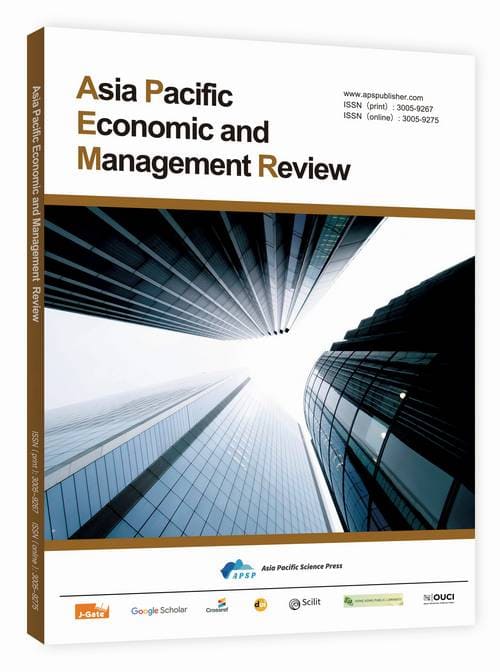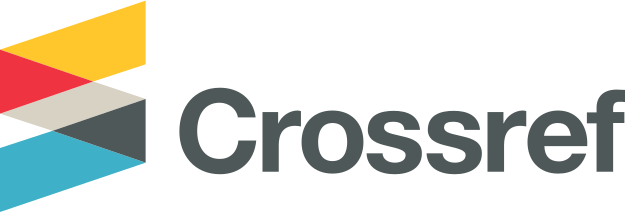From Willingness to Pay to Behavioral Prediction: Exploring the Interconnection among CVM, CE, and PLS-SEM
DOI:
https://doi.org/10.62177/apemr.v2i6.794Keywords:
CVM, CE, PLS-SEM, Non-market Valuation Model, Behavioral Economics, Total economic valueAbstract
This article reviews three related methods extensively used in non-market valuation research, namely, contingent valuation method (CVM), choice experimental method (CE) and partial least squares structural equation model (PLS-SEM).CVM measures the maximum monetary amount of willingness to pay (WTP) that people are willing to pay for non-market goods, CE analyses the preference trade-offs at the attribute level, and PLS-SEM explores the potential psychological mechanism underlying behavioral intention.This article refers to recent cross-disciplinary research to trace the historical process of development, complementarity of methods and integration of theories.
This article believes that the integration of CVM, CE and PLS-SEM has entered a new stage in valuation research, it goes beyond the static monetary valuation and turns to a behavioral valuation path that connects economic, cognitive and social aspects of decision-making.This article discusses the convergence of methodology, as well as the challenges in data compatibility, sampling requirements and differences in model assumptions.In addition, this article also focuses on the future research direction, including hybrid survey design, data integration and interdisciplinary theoretical expansion.Finally, this article advocates establishing an empirical framework to predict and explain public preferences in the field of heritage and environment.Even if it is impossible to make direct policy adjustments, such as price adjustment, this comprehensive assessment model can still play a predictive and strategic role, thus providing decision-makers with an empirical basis for sustainable and inclusive management.
Downloads
References
Stahel, W. R., & Jackson, T. (2024). Optimal utilisation and durability—towards a new definition of the service economy. In Clean Production Strategies Developing Preventive Environmental Management in the Industrial Economy (pp. 261-291). CRC Press.
Iqbal, M. H., & Hossain, M. E. (2023). Tourists’ willingness to pay for restoration of Sundarbans Mangrove forest ecosystems: a contingent valuation modeling study. Environment, Development and Sustainability, 25(3), 2443–2464.
Da Costa, S., Decancq, K., Fleurbaey, M., et al. (2024). Preference elicitation methods and equivalent income: an overview.
Kumatongo, B., & Muzata, K. K. (2021). Research paradigms and designs with their application in education. Journal of Lexicography and Terminology, 5(1), 16–32.
Hao, Q., Xu, S., Liao, Y., et al. (2023). Determinants of residents’ willingness to pay for water quality improvements in Haikou, China: Application of CVM and ISM approaches. Water, 15(7), 1305.
Ho, N. B., Vo, D. V., & Rowley, C. (2024). Contingent valuation versus choice experiment: estimating the willingness to pay for organic oranges in Vietnam. Journal of Trade Science, 12(4), 268–283.
Shafique, M. N., Rashid, A., Yeo, S. F., et al. (2023). Transforming supply chains: Powering circular economy with analytics, integration and flexibility using dual theory and deep learning with PLS-SEM-ANN analysis. Sustainability, 15(15), 11979.
Cong, J., Wang, H., Wang, L., et al. (2024). Decoding the carbon-labelling incentive: Behavioral gaps, industry heterogeneity, and premium sensitivity. Industry Heterogeneity, and Premium Sensitivity.
Klaavu, O. (2025). Comparative analysis of economic valuation methods for environmental externalities in wind energy projects.
Kinnebrew, E., Shoffner, E., Farah‐Pérez, A., et al. (2021). Approaches to interdisciplinary mixed methods research in land‐change science and environmental management. Conservation Biology, 35(1), 130–141.
Eregae, J. E., Njogu, P., Karanja, R., et al. (2021). Economic valuation for cultural and passive ecosystem services using a stated preference (Contingent Valuation Method (CVM)) case of the Elgeyo watershed ecosystem, Kenya. International Journal of Forestry Research, 2021(1), 5867745.
Baymuminova, N., Shermukhammedova, G., & Choi, J. G. (2023). Estimating the economic value of Ichan Kala using the contingent valuation method (CVM). Sustainability, 15(3), 2631.
Raihan, A. (2023). A review on the integrative approach for economic valuation of forest ecosystem services. Journal of Environmental Science and Economics, 2(3), 1–18.
Allahmoradi, E., Mirzamohammadi, S., Bonyadi Naeini, A., et al. (2022). Policy instruments for the improvement of customers’ willingness to purchase electric vehicles: A case study in Iran. Energies, 15(12), 4269.
Zhang, N. (2025). Comparative analysis of hedonic wage and discrete choice models in valuing job safety. Central European Economic Journal, 12(59), 1–16.
Koumoutsea, A., Boufounou, P., & Mergos, G. (2023). Evaluating the creative economy applying the contingent valuation method: A case study on the Greek cultural heritage festival. Sustainability, 15(23), 16441.
Rahman, M., & Sciara, G. C. (2022). Travel attitudes, the built environment and travel behavior relationships: Causal insights from social psychology theories. Transport Policy, 123, 44–54.
Durand, A., Grego, M., Valentino, et al. (2024). Country selection for FDI: Insights from the theory of planned behavior. SSRN Electronic Journal.
Usakli, A., & Rasoolimanesh, S. M. (2023). Which SEM to use and what to report? A comparison of CB-SEM and PLS-SEM. In Cutting Edge Research Methods in Hospitality and Tourism (pp. 5–28). Emerald Publishing Limited.
Zeng, N., Liu, Y., Gong, P., et al. (2021). Do right PLS and do PLS right: A critical review of the application of PLS-SEM in construction management research. Frontiers of Engineering Management, 8(3), 356–369.
Purwanto, A., & Sudargini, Y. (2021). Partial least squares structural equation modeling (PLS-SEM) analysis for social and management research: a literature review. Journal of Industrial Engineering & Management Research, 2(4), 114–123.
Bakhsh, J. T., Taks, M., & Parent, M. M. (2022). Examining monetary valuation methods to analyze residents' social value from hosting a publicly-funded major sport event. Frontiers in Sports and Active Living, 4, 823191.
Papastergiou, E., Latinopoulos, D., Evdou, M., et al. (2023). Exploring associations between subjective well-being and non-market values when used in the evaluation of urban green spaces: A scoping review. Land, 12(3), 700.
Shakib, S., & Habib, K. N. (2025). The application of rational inattention theory in modelling residential location choices: A cross-sectional investigation using a stated preference dataset. Journal of Transport and Land Use, 18(1), 639–662.
Koumoutsea, A., Boufounou, P., & Mergos, G. (2023). Evaluating the creative economy applying the contingent valuation method: A case study on the Greek cultural heritage festival. Sustainability, 15(23), 16441.
Attarroshan, S., Pourrostami, R., Zare, A., et al. (2020). Economic valuation and estimation of willingness to pay for Baghestan recreational and tourist village in Karaj using contingent valuation method (CVM). Journal of Tourism and Development, 9(4), 39–48.
Pappa, D., & Kaliampakos, D. (2025). Unveiling the non-market value of a fragile coastal wetland: A CVM approach in the Amvrakikos Gulf, Greece. Environments, 12(2), 59.
Lakens, D. (2022). Sample size justification. Collabra: Psychology, 8(1), 33267.
Hammond, M., Martinez, J., & Ziff, E. (2021, July). An exploration of social and educational influences on user-centered design: revisiting a compatibility questionnaire. In 2021 ASEE Virtual Annual Conference Content Access.
Ramkissoon, H. (2022). Perceived visitor impacts of cultural heritage tourism: The role of place attachment in memorable visitor experiences. In Handbook on the Tourist Experience (pp. 166–175). Edward Elgar Publishing.
Arnone, M., Leogrande, A., Drago, C., et al. (2024). Social trust and support networks: A regional analysis of Italy.
Downloads
How to Cite
Issue
Section
License
Copyright (c) 2025 Kaiyu Zhang

This work is licensed under a Creative Commons Attribution-NonCommercial 4.0 International License.
DATE
Accepted: 2025-11-02
Published: 2025-11-06
















